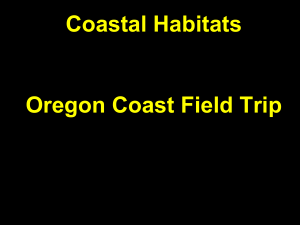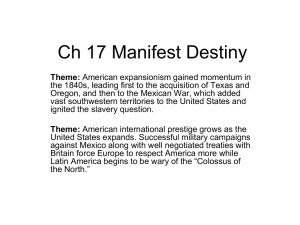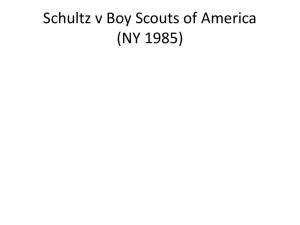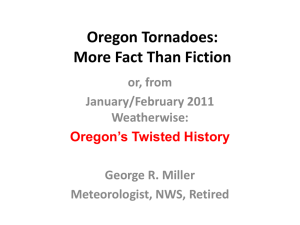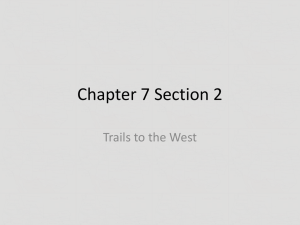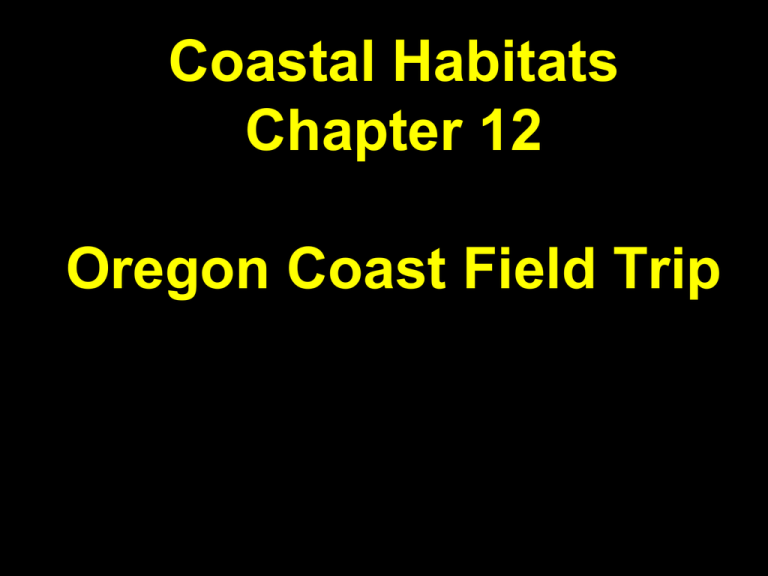
Coastal Habitats
Chapter 12
Oregon Coast Field Trip
Animals of the Benthos
98% of marine species are benthic
Hydrothermal vents
Coral reefs
Rocky shore
Sandy shore
Oregon
info at the Oregon Coastal Atlas
– www.coastalatlas.net
Oregon Coast Field Trip th
Sat., May 30
dusk.geo.orst.edu/oceans/field.html
Be
here by 7:15 a.m.
7:30 - Busses leave
from Wilkinson lot
8:30 - HMSC Visitor
Center
10:00 - Travel to Seal
Rock State Park
10:30
- Seal Rock
volcanic rocks and
tide pools
12:00 - Lunch at
Seal Rock (bring
your own)
12:30ish - Return
to Corvallis
Back by ~2:00
Required Field Trip Guide
dusk.geo.orst.edu/oceans/field.html
Answers to bolded questions in guide. Please
TYPE your report!!
– Turn assignment in to your TA
– Due by 5:00 p.m., June 5th
– This constitutes LAB 9
Rocky Shores
spray
zone
– mostly dry, covered by water only during
storms
high
tide zone
– fairly dry, covered only by the highest high tide
middle
tide zone
– equally exposed & covered during all high &
low tides
low
tide zone
– mostly wet
Oregon Rocky Intertidal Zone
Oregon State Parks Guide
Oregon Rocky Intertidal
Spray Zone:
periwinkle snails boundary between spray &
intertidal
rock louse & sea roaches scavenge organic debris
High Tide Zone:
filter-feed seawater / larvae are planktonic
limpets, buckshot or acorn barnacles
Oregon Limpet
Chiton Tonicella
mollusc related to sea snails, clams, limpets
Middle Tide Zone:
more variety, competition for space
goose barnacles, mussel, sea stars
Oregon Barnacles on Mussel
Fun Fact for the Day:
Barnacle symbiosis
male & female attached to each
other through most of life
until male reduced to size of
microscopic penis
Oregon Sea Star Zonation
Pisaster Sea Stars
Henricia Sea Star
Low Tide Zone (Tide Pools):
dominated more by plants than by animals
algaes, sea urchins, sea anemones
Exploring the Tide Pools
(and associated geology)
Shoes
with good tread/grip
Extra socks
Rubber boots, if you have them
Take
your field trip guide with
you!
Print out this PPT too if you like!
(change “output” to black & white for best results)
Oregon Algaes - Fachea
Oregon Algaes - Hallosaccion
Oregon Algaes - Mazzaella
Oregon Algaes - Postelsia
Oregon Sea Urchins
Oregon Anemone - Anthopleura
Oregon Anemone - Corynactis
Shore Crabs roam entire intertidal range
Scavengers feeding on dead animals,
seaweed
Oregon Crab - Pugettia
Oregon Rocky Intertidal Zone
Oregon State Parks Guide
Animals of the Rocky Shores
spray
zone
– mostly dry, covered by water only during
storms
– periwinkle snail
– rock louse
high
tide zone
– fairly dry, covered only by the highest high tide
– Buckshot or acorn barnacles
– limpets
Rocky Shores cont.
middle
tide zone
– equally exposed & covered during all high &
low tides
– more variety, competition for space
– goose barnacle, mussel, sea star
– sea anemone, hermit crabs, sea urchins (tidal
pools)
low
tide zone
– mostly wet
– surf grass, algae, seaweeds
– sea urchins, sea anemones
Sandy Shores
no
fixed surface to attach to
different adaptations protect animals from
fluctuations in
– temperature
– salinity
– water levels (so as not to dry out)
clams,
worms, sand stars, amphipods
Clams
Worms, Amphipods, Sand Stars
Feeders on Sandy Shores
Clams
– suspension feeding
Worms
– deposit feeding by ingestion
Amphipods
– deposit feeding on surface
Sand
stars
– carnivorous feeding on unlucky neighbors
Important Web Sites
Field
Trip Page and Guide
– dusk.geo.orst.edu/oceans/field.html
– dusk.geo.orst.edu/oceans/OC103FieldTrip.pdf
Oregon
Coastal Atlas
– www.coastalatlas.net
HMSC
Summer Experiences
– hmsc.oregonstate.edu/summer.html

